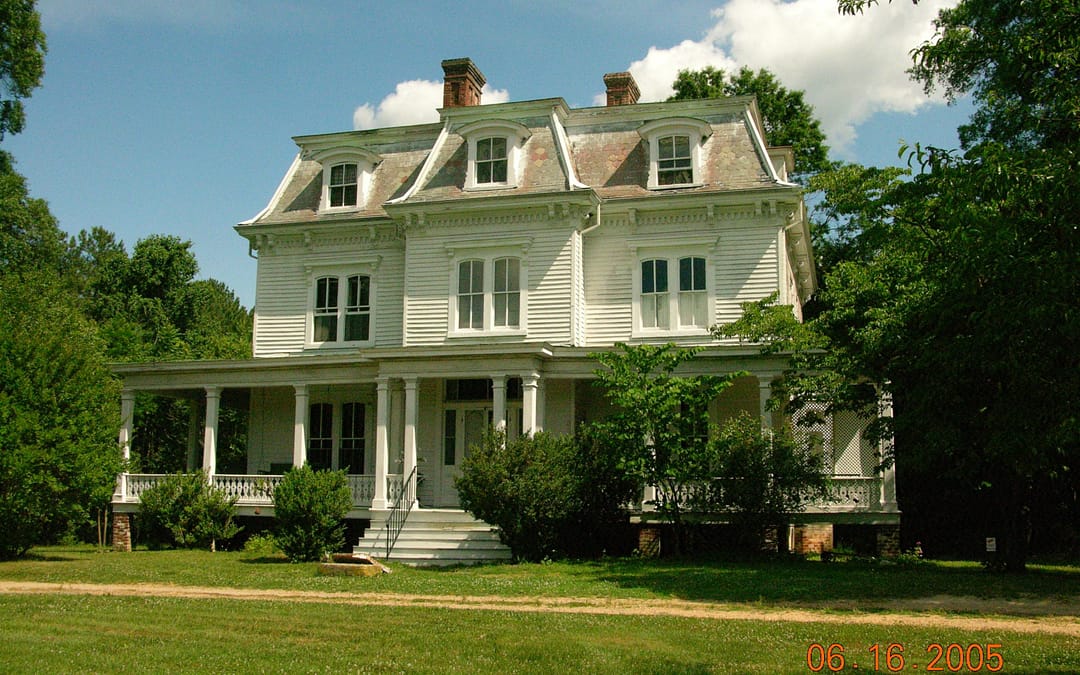Two hundred years ago, there was both good and bad construction. Clearly, they were dealing with the same issues that we are, deciding in which buildings to invest for the long run, and skimping where finances required. The old buildings in our midst are the buildings that have lasted. The buildings that are left tell us a lot about how buildings can be built to last, and which details do not function well over time.
Design. The buildings that last usually seem to have been thoughtfully designed, whether by an owner, architect (not typically), or the craftsman executing the work. Design to manage water is central, with heavy roof overhangs, high foundations, steep roofs, and thoughtful application of exterior trim details. (The modern technique of building directly on a slab creates many moisture problems low in the walls, and once that damage gets started, it can travel up the walls. Buildings built in this way will not be here for the long term.)
Craftsmanship. The thoughtful execution of good design is equally important — the site carpenters were a key part of this. Thoughtful execution included cutting drip slots on the bottom of window sills and water tables, sloping joined materials to the outside of the building, having tightly joined connections, etc. Carpentry was not reliant on caulking, the joinery could be successful on its own.
The quality of craftsmanship today is varied – due to the vocational training in the schools being whittled away, and the lack of proper training and experience of many carpenters. This is not to say that there are not plenty of great craftsmen out there today — there are — you just need to be sure that the company that you are hiring has them. Carpenters must be thinking people, all of these myriad details are paramount to the building’s long term success.
Today’s quality of construction and finish is generally lower than it was 50 or 100 years ago – why? Today we have automation, electricity, and specialized tooling, that, in the right hands, should make good craftsmen faster than our predecessors. Unfortunately, these details are not often understood or appreciated.
Material Quality. Water destroys materials that are prone to rot — increased moisture content allows bacteria, fungi, and insects to survive and to use that wood as a food source. In old houses, they used materials that were more naturally rot resistant, such as old growth pine that are full of resins and natural chemicals. Today’s millwork, such as windows, are often made out of very rot prone materials like spruce which has given wood windows a very bad name.
Other materials such as stone, brick, copper, slate, and high quality, rot resistant wood have been with us for generations. Frankly, long lasting, low maintenance materials were figured out long ago.
High quality materials, coupled with good design and execution, is a combination proven to survive the decades. All of these options are still available today.
In a coming feature, I will talk more about wood quality, and the reason that wood is getting such as bad rap these days.
Our Statement of Quality
If you select Vintage Building, you’ll get craftsmen unmatched for the superior result we are able to provide.
Meticulous and steadfast, we are unwavering in quality.
Our Specialties
Class A General Contractor
Historic Restoration
Historic Preservation
New Construction
Home Renovation
Millwork-Custom & Replica
Custom Cabinetry
Get in Touch
600 North Loudoun St.
Winchester, VA 22601
540-545-8880

Recent Comments